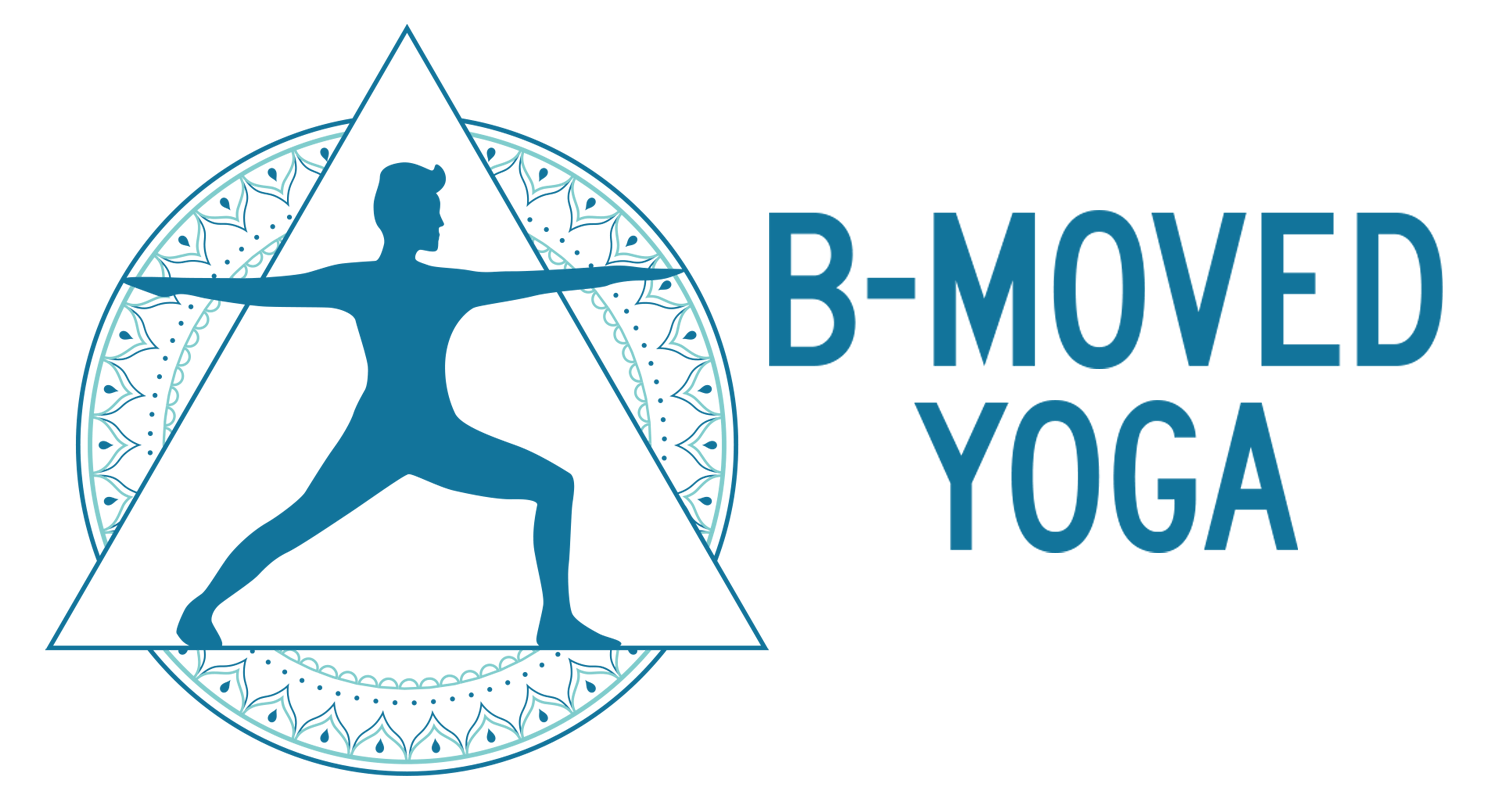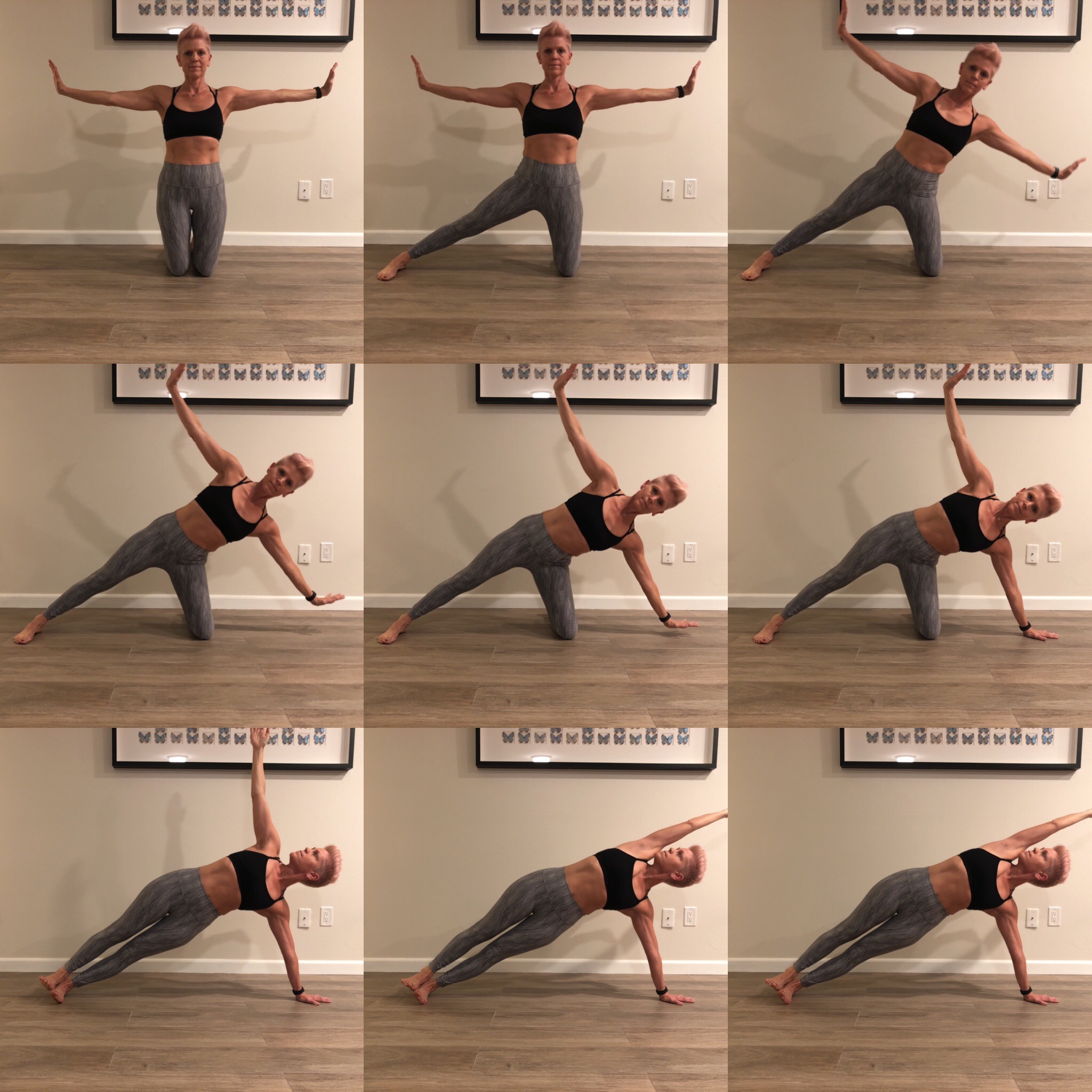For years I was taught to stack my shoulder directly over my wrist in side plank pose. Consequently, I was also teaching it that way to my students. There’s a belief in yoga asana that if the joints are stacked, they are safer from wear and tear, and more stable. In my research for this particular article, I found the following quote “When you’re in side plank, check in a mirror to ensure your wrist is directly under your shoulder. This stacking concept takes stress out of the shoulder, elbow and wrist. If you are unsure, then talk to a teacher, this is exactly what they are trained for – keeping you safe and open.” (Source article)
First, be careful of what you accept as fact on the interwebs. Anyone can write anything at any time and publish it as opinion. This article is the perfect example. Second, just because your teacher is a trained and “certified” yoga teacher doesn’t mean they have all the answers. Do your own research, ask questions, and learn the “why” behind the “what.” ESPECIALLY if the pose doesn’t feel quite right to you. It’s not uncommon for yoga teachers to simply repeat verbal instructions that they’ve heard other teachers use, because they take them as fact, or simply because they have great respect for their teacher. I’ve been guilty of this "parroting" practice over the years as well. Don’t be too hard on yourself or your teacher if this is the case.
It’s true that the concept of “stacking” the joints has long been revered as a “safety” concern in yoga. But does science agree in the case of side plank?
What changed my mind about joint stacking in side plank, you ask? Last December, I was thrilled to attend a teacher renewal workshop with internationally renowned yoga teacher Jason Crandell at Yoga Works in Larchmont, CA. After a brief anatomical explanation and a simple demonstration from Jason in the span of about 60 seconds, I was thunderstruck, and a little bit embarrassed. I have since adjusted my own practice and my teaching. Some students look at me like I’m crazy when I discuss alignment in this pose, until I explain the “why.” After the explanation and demo, I see a roomful of “a-ha!” expressions. Some teachers still attempt to correct my alignment in side plank, without asking why I’m practicing it with my shoulder slightly behind my wrist. “You don’t know what you don’t know until you know it.”
Without further ado, here’s why it’s advised to have your shoulder slightly behind your wrist (or wrist slightly in front of your shoulder) in side plank.
Let’s start with the geometry:
*There are two lines in side plank. The first: The line of your shoulder to your weight-bearing hand. The second: The line of your body (feet, legs, torso.) When you are in side plank, your body (the line from your feet through your head) is not parallel to the floor, it’s tilted at about 20-30 degrees. This means that if you stack your shoulder over your wrist in side plank, the angle of your shoulder in relationship to your body will be LESS than 90 degrees, about 60-70%. In order to create a 90-degree angle in your shoulder joint in relationship to your body, you need to move your hand slightly forward of your shoulder joint. Why do we want a 90-degree angle in our shoulder? Why is that better than stacking the joints?
Now, for the anatomy:
The shoulder joint (glenohumeral joint) is a ball and socket, and is most stable when it’s at a 90 degree angle in side plank. The 90-degree angle of the shoulder in side plank most effectively distributes the load of this posture more evenly through your ball and socket. The 90-degree angle also helps to effectively recruit the muscles that need to work in side plank – the external shoulder rotators, lats, and serratus anterior, and traps. You might think that you ARE using a 90-degree angle in side plank if you have your “joints stacked.” But remember, your body is tipped sideways in side plank, and your body is longer than your arm. There’s that geometry again.
Finally, the Practice:
Kneel with your arms abducted laterally at shoulder height (think Warrior 2 arms with your wrists extended, as if you were pushing two walls away from you.) This created a 90-degree angle between your arms and your body, correct? Yes! Now, keeping your arm in a stable position in your shoulder (don’t change the angle!), tip yourself to one side like a teapot. Come onto one knee, extend the other leg toward the back of your mat, and come to a modified side plank. If you did NOT change the angle of your shoulder, your wrist/hand will have landed slightly in front of your shoulder. Make sure your weight bearing arm is externally rotated, and fire your serratus, lats, and be aware of the activation of your external shoulder rotator muscles. If you like, you can now come onto the outer edge of your bottom foot (dorsiflex both feet) and stack both legs for side plank. Press forward and down with your weight-bearing hand and draw your obliques toward your midline to elevate your hips away from the floor.
Square used to show 90 degree angle
Same aquare, just tipped on it’s side.
I think you will find this version of side plank feels much more stable, strong, integrated, AND your wrist will also be more comfortable. Why? Because with your shoulder slightly behind your wrist, you’ve lessened the angle of wrist extension
Progression
Tip like a teapot! Grip your mat with your fingertips. Feel the muscles of your trunk supporting your spine in a 3D way.
If you’re half as shocked as I was when I learned this, you may have to pick your jaw up off of the floor now ;-)
Please comment, share, or reach out to me if this was a game changer for you. sara@sarapaigeyoga.com
*Source: https://blog.yogaglo.com/2014/06/yogaanatomy-in-action-stronger-safer-arm-balances/




